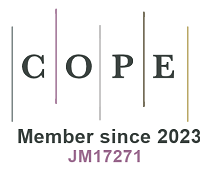Water Emerging Contaminants & Nanoplastics

Special Interview with Prof. Yasin Orooji
School of Geography and Environmental Studies, Zhejiang Normal University, China
NaN

Data
17
Authors
871
Reviewers
2022
Published Since
For Reviewers
For Readers
Add your e-mail address to receive forthcoming Issues of this journal:
Themed Collections

Special Interview with Prof. Yasin Orooji
School of Geography and Environmental Studies, Zhejiang Normal University, China
NaN

Coming soon.
Data
17
Authors
871
Reviewers
2022
Published Since























